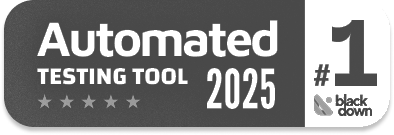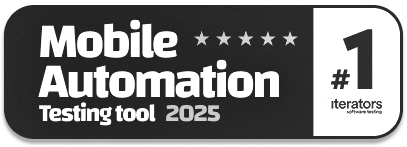A Non-Technical Founder’s Guide to Product Quality
|
|
In the tech start-up world, there is an emerging trend for non-technical people, including marketers, business persons, and domain experts, to start and run companies. They may not have the development or engineering history, but they’re equally visionary. But one of the big challenges these founders have is keeping a high-quality product without being able to write any code themselves.
Let’s understand how non-technical founders can take charge of product quality and the methodologies and techniques that will help them lead a high-quality product development effort without needing to code.
| Key Takeaways: |
|---|
|
Defining Product Quality
Product quality is not technical correctness or absence of bugs. It’s a matter of how well the product meets the users’ expectations, solves real problems, and delivers a delightful experience. True quality is what the offering delivers relative to the needs of its users.
What is Product Quality?
Product quality, from a business sense, is not just whether the product works or meets the technical specifications. It’s not about how much the product can do, but how well it resonates with users and provides adequate solutions to users. A particular product may be bug-free and state-of-the-art in terms of technology, but it can still fail if users perceive the product to be confusing, unhelpful, or at odds with their goals.
This wider perspective takes attention off internal metrics such as performance or code completeness, and places it upon external opinions such as utility and satisfaction. Quality isn’t constant. It is situational, and it is heavily subject to context. Something that’s a nice product for one cohort of users might be a poor fit for another, even if the quality is high-quality, because it’s high-quality given context, timing, and expectations. Learn about the metrics used by QA Manager: Metrics for QA Manager.
The Seven Dimensions of Product Quality
Product quality can be further deconstructed and split into several core dimensions. They have an impact on the user experience, ultimately on how successful a product will be later in its life. Each of these dimensions influences users profile and perception on the product.
- Usability: Good usability means a product is easy to use and understand so that users can achieve their goals with their usage. Read: Automating Usability Testing: Approaches and Tools.
- Reliability: A product is said to be reliable when it is able to function as expected and deliver accurate results irrespective of the conditions and environment. Read: Reliability Testing – A Complete Guide.
- Performance: High-performing products can be delivered in a rapid and responsive manner, in a way that meets the needs of the users. Read: What is Performance Testing: Types and Examples.
- Security: A secure product adds confidence that sensitive information will not be exposed or misused, and unauthorized users will be prevented. Read: Security Testing.
- Maintainability: If a product is maintainable, the team can make the updates, fixes, and new features with the least amount of disruption.
- Testability: The more testable your product, the easier it is to check if things are working as they should, and also able to support iterative enrichment.
- Scalability: The scalability of a product matters, as it should be able to run efficiently and be stable as more people use it. Read: Scalability Testing: Automating for Performance and Growth.
Owning Quality as a Non-Technical Leader
As a leader, you may not be required to write code in order to lead product quality, but you do need to lead it. As a non-tech founder, your character influences the language the team will use for quality throughout the whole development.
Responsibilities
- Define what “quality” means for your business and customers: Clearly articulate what a valuable, trustworthy product looks like from a user and market perspective.
- Set expectations and vision for how the product should feel and function: Lead with a vision that prioritizes intuitive design, reliability, and a seamless user experience.
- Prioritize quality alongside features and growth: Resist the urge to chase new features at the expense of stability, usability, and long-term value.
- Create space for quality in timelines and resources: Allocate time and capacity for testing, refinement, and fixing issues, not just for building new things.
The Risk of Detachment
Non-technical founders usually think that delivering quality is only the tech team’s responsibility. This detachment can result in bloated applications, ever-increasing technical debt, and unaligned priorities.
Getting hands-on with product feedback, usability testing, and prioritizing stability is important, whether or not you understand the underlying code.
Quality Insights for Founders
As a non-technical founder, you don’t need to know everything about how your product works in order to judge its quality. Indeed, what you do need is a practical, repeatable means of actually seeing how well your product provides value to users and how it does so consistently. A good technique is to do a periodic, high-level scan over the most important spots in the writing pane.
Quick Quality Scan
This allows you to self-diagnose the product’s health by answering just five basic yet powerful questions. Each area is scored on a scale of 1 (poor) to 5 (excellent), so you can see, at a glance, the level of quality for each. Regular check-ins using such an approach, whether weekly, biweekly, or otherwise, enable you to spot trends, uncover weaknesses, and rally others around high standards.
- Does it work?: Does the product do its basic job without crashing or missing functionality unexpectedly?
- Does it crash?: Watch for any lack of stability or moments where the application doesn’t work, locks up, or crashes.
- Is it fast?: Review whether the product can respond fast enough to meet user expectations and keep a smooth user experience.
- Is the data right?: Make sure all the information displayed is correct and consistent throughout the product area.
- Can I understand it?: Think about whether the interface, labels, and mechanics are intuitive and easy to understand without explanation.
Quality Debt Tracker
Over time, even well-made products collect small defects, things that aren’t broken enough to stop the show, but still erode the user experience bit by bit. A Quality Debt Tracker prevents these problems from accumulating and becoming major issues that threaten your product reputation or performance.
For each issue, track:
- Impact: Determine how likely a large number of users are to hit the problem, whether it is more of a widespread annoyance or a possible niche issue.
- Severity: What is the impact of the issue on a user’s path, is it a minor roadblock or key action stopper?
- Fix Cost: Assess how much effort will be needed to fix the problem, regarding time, difficulty, and how busy the team is.
- Business Cost: Ask yourself if the issue negatively impacts brand trust, drives customers away, or inhibits growth.
This prioritization framework helps make quality debt visible and gives you the confidence to allocate time for fixing it.
Communicating Quality with Developers
As a non-technical founder, you no longer need to talk in code to have meaningful discussions about product quality. By asking the right questions and focusing on user impact, you can help steer the team to create a better experience, a more reliable one. Good communication is what keeps quality a common goal not just a technical issue.
Ask Insightful Questions
One of the most powerful ways non-technical founders can impact product quality is simply by asking the right questions. It makes risks present, assumptions clear, and forces the team to think critically about how the product actually behaves in the world.
- “How do we know this works?”: Ask the team how the feature has been validated and what evidence makes you believe it is a reliable feature.
- “What could go wrong here?”: Encourages forward thinking around possible edge cases, failure modes, or unintended consequences.
- “If we needed to change this next month, how hard would it be?”: Aids in understanding if the current solution is uniform and maintainable in future iterations.
- “What happens if 10x more users show up tomorrow?”: Checks the scalability and stability of a system, to see whether unexpected growth will break it.
- “Do we have visibility into how users are behaving?”: Checks whether the team can monitor user interactions and identify issues through real-world usage.
These questions promote thinking, testing, and documentation, rather than just technical implementation.
Beware of Magic Words
Words that might seem harmless, like “just,” “quick”, and “simple,” might inadvertently communicate that speed outweighs quality, encouraging developers to rush through or skip thoughtful steps. If you’re a founder, your language is the lead instrument, so let’s focus on thoughtful collaboration, not urgency, at the expense of impact.
Instead, say:
- “What are the trade-offs?”: Will encourage an even-handed debate about risks, benefits, and long-term effects.
- “Can we do this well in the time we have?”: Sends the signal that quality matters and encourages the team to be realistic about scope and deadlines.
- “Is there a cheaper, simpler version we can ship first?”: Builds an iterative approach without losing sight of quality or inundating the team.
Building Quality into Your Workflow
For product quality to be maintained, it should be a part of your team’s daily practice, not an afterthought. When quality becomes ingrained in how you plan, build, and release, you have fewer surprises, can iterate more quickly, and build stronger user trust.
The Quality Flywheel
Quality isn’t a one-time achievement; it’s a process of continuous iteration and improvement, through real user feedback. This straightforward loop will ensure your team remains focused on what matters most and builds a culture of accountability and growth in the process.
- Observe: Notice where users have a difficult time or encounter friction in the product.
- Log: Gather those issues in a common backlog, so nothing important is lost or abandoned.
- Discuss: Include them in team conversations to evaluate their impact and feasibility.
- Act: Pick out the most impactful issues and make a commitment to address them in the next cycle.
- Reflect: After the change has been implemented, reflect upon whether it actually improved the user experience.
Repeat this every sprint, and quality becomes a culture, not an afterthought.
Define “Done” Clearly
Without a common definition of “done,” features can be released unfinished or unstable. This results in misunderstandings and quality problems. A robust definition of “done” aligns accountability across the team for both functionality and experience.
- Tests are written and passed: The feature works, and we are confident it doesn’t break anything.
- Code reviewed and merged: The implementation has been reviewed by peers for quality, clarity, and consistency.
- Monitored in production: The team is looking for errors, performance problems, or user feedback after release.
- Documentation updated: Relevant internal or user-facing instructions are accurate and complete.
- Usability verified: The feature is intuitive and provided in a way that all users can understand and interact with it confidently.
- No critical regressions introduced: Everything works as it did before, and no major new features were broken inadvertently.
Make “done” a quality standard, not just a box-tick. Read more about QA from the leader’s perspective: QA from Engineering Leader’s Perspective.
Avoiding Quality Pitfalls
Non-technical founders contribute a lot to the quality of a product, but mistakes are all too easy to make, especially while managing growth, timelines and limited resources. Identifying and fixing these few common mistakes can assure that they are not compromising the quality of the product that users trust, and love.
Common Mistakes Non-Technical Founders Make
- Developing feature crush vs. fixing broken: New features piled on top of broken elements can result in a fragile and frustrating user experience.
- Pushing deadlines and ignoring test failures: Pushing to production and ignoring test failures is a recipe for having to do more work and for burning the trust of your peers.
- Assuming silence equals success: The absence of complaints isn’t necessarily a sign that users are happy. It can also mean they’ve just given up or churned.
- Not asking questions because of the fear of seeming uninformed: Staying curious and engaged, even without technical knowledge, is key to leading a quality-driven team.
Fixing These Behaviors
Elevating product quality begins with simple, deliberate changes in mindset and habit. As a founder, modelling these differences is beginning a transformation of your entire team.
- Regular check-ups can help ensure you’re aware of real user issues and stave off issues that might go unnoticed.
- Reinforce the idea that stability and behind-the-scenes work are as important as new features.
- Get quality assurance and user design involved early and often in product conversations.
- Use measurable goals such as crash-free sessions or user satisfaction scores so you can measure and track quality results.
Scaling Quality as You Grow
As your business expands, so does the challenge of keeping your product at a high-quality standard. What worked for a small team and a user base in the past can become painful and inadequate if processes and attention are not tightened. If you want to scale efficiently, then quality needs to be an integral part of your culture, not something that’s for later.
Building the Quality Culture
A good product begins from a team of people who really worry about quality and possess pride in their work. Developing cultures that prioritize sustained excellence over short-term shortcuts are measures to grant quality as a habit rather than an afterthought.
- Hire engineers who value craftsmanship by seeking out individuals who prioritize code clarity, performance, and the overall impact on users. Not just how fast they can ship features.
- Celebrate clean code, thoughtful refactoring, and efficient test suites. These behind-the-scenes efforts play a crucial role in keeping the product stable, scalable, and maintainable over time.
- Document key takeaways in postmortems to ensure that every failure or incident becomes a valuable learning opportunity. This brings in continuous improvement rather than assigning blame.
- Establish clear quality SLAs to define how quickly critical issues must be addressed, helping the team maintain user trust and ensure prompt responses when things go wrong.
Your Long-Term Role
As you mature in your role, quality control is no longer about being involved in every decision, but about setting the bar for the entire team. You are the one who stands up for good quality when push comes to shove, and makes it a non-negotiable aspect of the company’s DNA.
- Ask the tough questions that push assumptions and possible risks to the surface before they become problems.
- Advocate for testing before shipping and develop trustworthy releases, and prevent trivial failures.
- Defer launches as needed, knowing that it can be more expensive to ship something broken than to wait to get it right.
- Stay in touch with user feedback and be on the lookout for signs of frustration or confusion.
Read about: More Efficient Way to Do QA.
Conclusion
Quality is not a technical problem. It’s a leadership responsibility.
As a non-technical founder, you can influence product quality by being clear in your vision, empathetic to users, efficient in your tools and processes, and consistent in communication. You do not need to know how to code, but you do need to know how to care.
If you concentrate on providing real value, know what “quality” means to your users, and bake that into your company culture, what you produce will be delightful and lasting.
| Achieve More Than 90% Test Automation | |
| Step by Step Walkthroughs and Help | |
| 14 Day Free Trial, Cancel Anytime |












